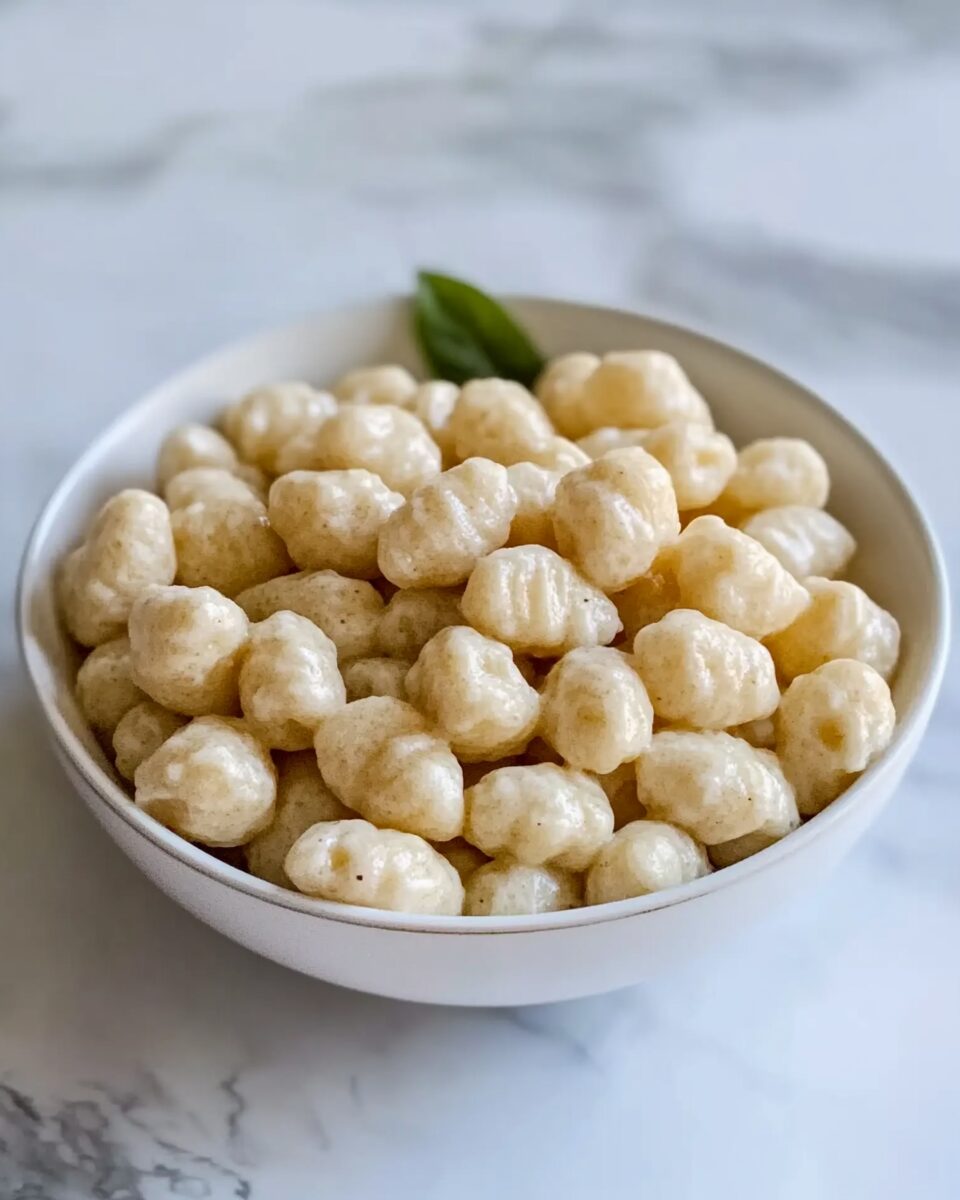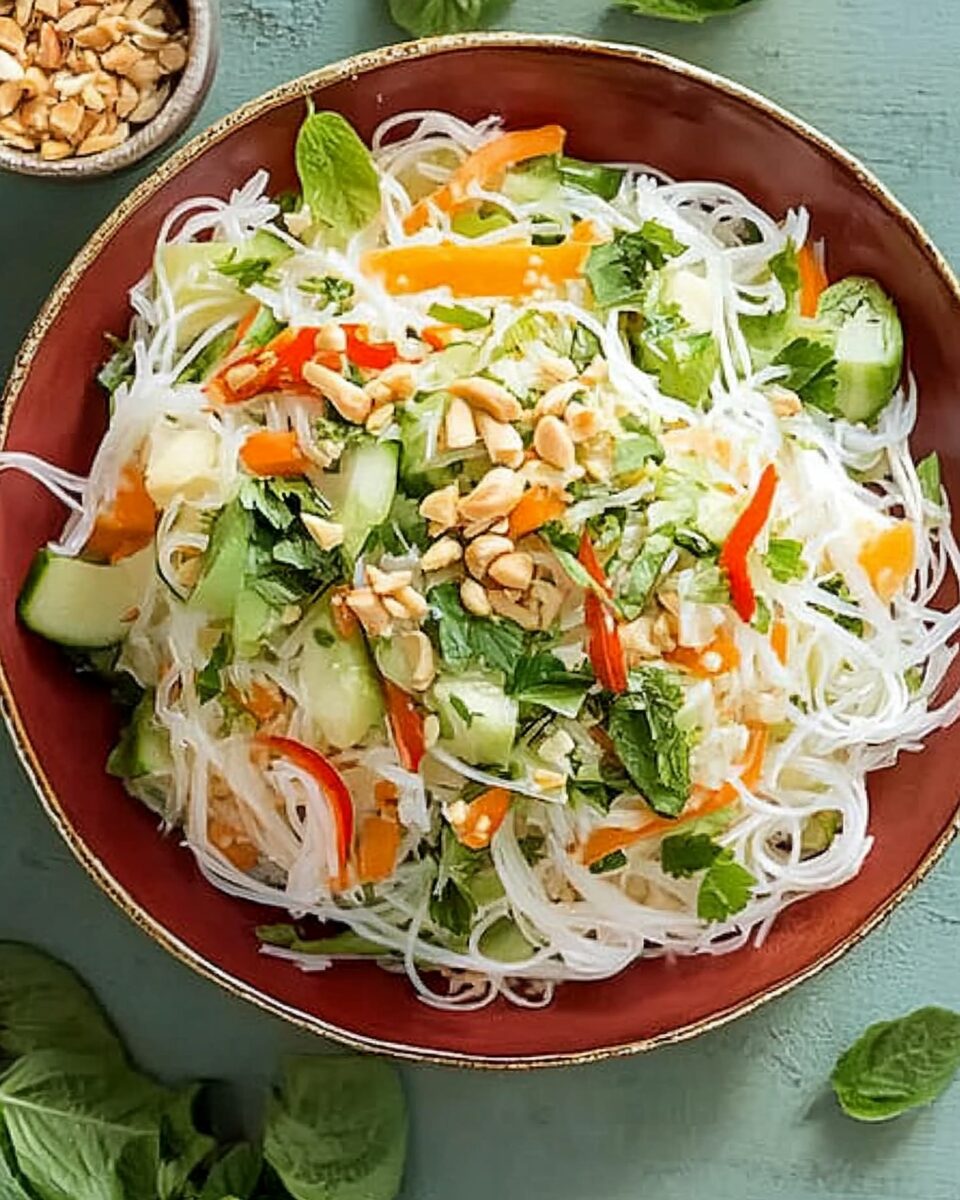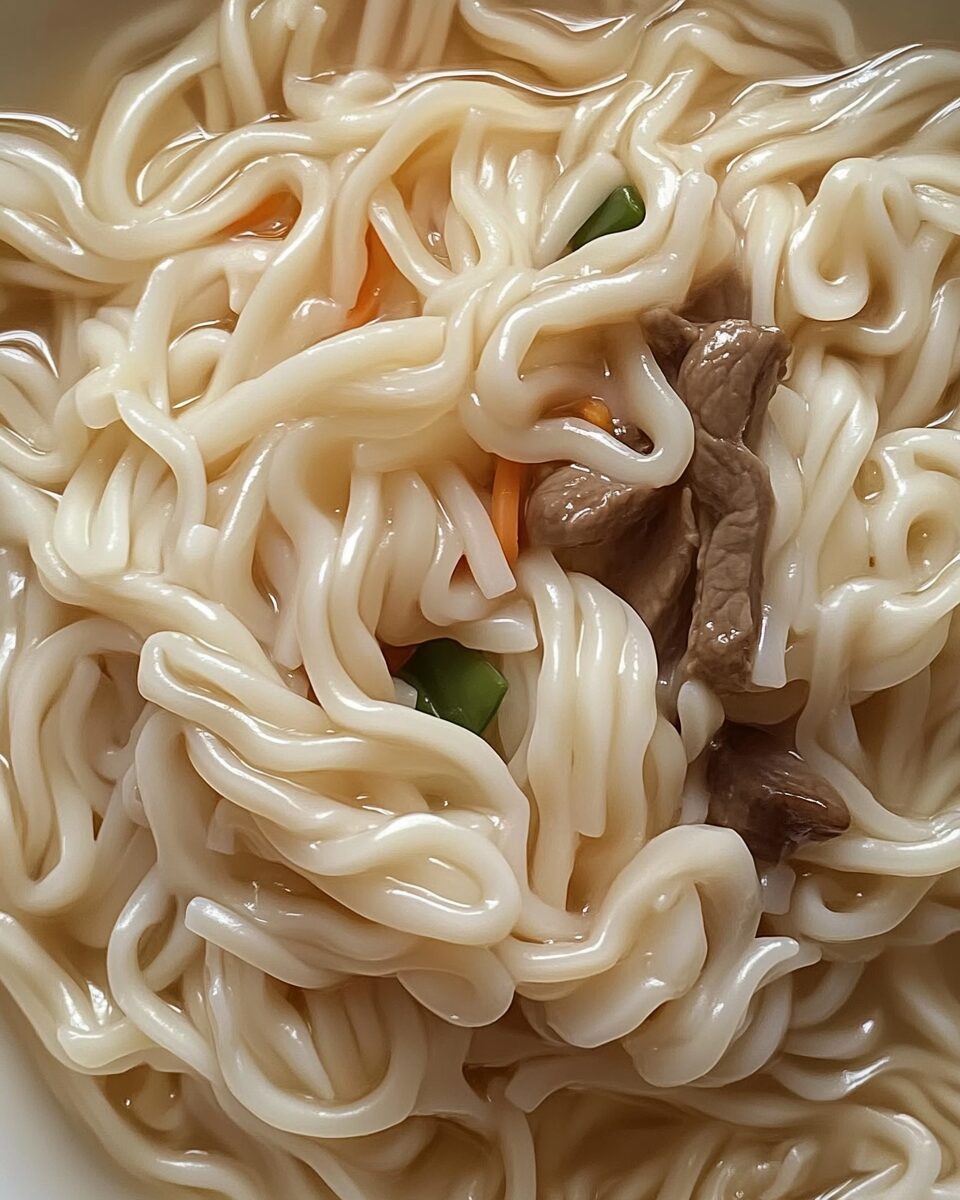Gnocchi is a classic Italian dish that brings together the comforting combination of potatoes, flour, and eggs into pillowy-soft dumplings. These tender little bites of goodness are the perfect base for a variety of sauces, whether it’s a simple butter and sage sauce, a rich tomato sauce, or a creamy Alfredo. Gnocchi is a versatile dish that’s easy to make at home and offers a satisfying, hearty meal. Whether you’re preparing it for a cozy family dinner or a special occasion, this gnocchi recipe will quickly become a favorite.
Full Recipe:
Ingredients
- 2 pounds potatoes, peeled
- 1 1/2 cups all-purpose flour
- 1 egg, beaten
- 1/2 teaspoon salt
- 1/4 teaspoon ground white pepper
Directions
- Place the potatoes in a pot and cover with water. Bring to a boil, then simmer until tender, about 20 minutes. Drain and mash the potatoes until smooth. Allow to cool slightly.
- In a large bowl, combine the mashed potatoes, flour, egg, salt, and pepper. Stir until a dough forms.
- Turn the dough out onto a lightly floured surface and knead gently until smooth, about 5 minutes.
- Divide the dough into small portions and roll each portion into a rope about 1/2 inch thick. Cut the ropes into 1-inch pieces.
- Using a fork, gently press each piece of dough to create the traditional gnocchi shape.
- Bring a large pot of salted water to a boil. Drop the gnocchi into the water and cook until they float to the top, about 2-3 minutes. Remove with a slotted spoon.
- Serve the gnocchi with your favorite sauce.
Nutrients
- Calories: 250
- Fat: 1g
- Carbs: 50g
- Fiber: 3g
- Sugar: 2g
- Protein: 6g
- Sodium: 200mg
The Origins of Gnocchi
The origins of gnocchi date back to ancient Rome, where early versions of these dumplings were made from semolina, water, and eggs. However, the modern potato gnocchi that we know and love today became popular in Italy around the 18th century, as potatoes became a more widely available ingredient. Potatoes, which were introduced to Europe from the Americas in the 16th century, quickly became a staple in many Italian kitchens.
Gnocchi has long been considered a comforting and hearty meal. In its early iterations, gnocchi was made from bread crumbs or rice flour, with variations depending on the region of Italy. The dish was typically served as a main course, often paired with a sauce made from butter, cheese, or tomato. The introduction of potatoes revolutionized gnocchi’s texture, making it softer and more satisfying, which is why the potato-based version remains the most popular today.
Though gnocchi is now enjoyed in many countries around the world, it continues to be a cherished part of Italian cuisine. In Italy, each region has its own variations of gnocchi, using local ingredients like pumpkin, spinach, and ricotta. Despite these regional differences, the core technique of making soft, doughy dumplings remains the same, making gnocchi a true Italian culinary tradition.
The Importance of Potatoes in Gnocchi
Potatoes are the star ingredient in the classic potato-based gnocchi recipe. While potatoes are simple, everyday ingredients, they play a crucial role in the texture and flavor of gnocchi. When boiled and mashed, potatoes release moisture, which helps create a dough that is soft and pliable yet firm enough to hold its shape when cooked.
There are a variety of potatoes to choose from when making gnocchi, but it is important to use starchy potatoes such as Russet potatoes. These potatoes have a high starch content, which helps absorb the flour and creates a lighter, fluffier texture for the gnocchi. Waxy potatoes, on the other hand, have a lower starch content and are better suited for roasting or boiling, but they do not lend themselves well to gnocchi-making because they result in a denser dough.
When preparing gnocchi, it’s essential to ensure that the potatoes are cooked properly. Boiling them until they are just tender, without overcooking, is key to achieving the perfect consistency. Once mashed, the potatoes should be cooled slightly before being incorporated into the dough mixture with flour and egg.
Potatoes also bring several health benefits to gnocchi. They are a good source of potassium, which helps regulate blood pressure and support muscle function. Additionally, potatoes are rich in vitamin C, an antioxidant that boosts the immune system and helps the body absorb iron. The addition of potatoes to gnocchi contributes not only to the flavor and texture but also to the overall nutritional value of the dish.
Flour and Eggs in Gnocchi Dough
Flour and eggs play important roles in binding the ingredients together and helping the dough maintain its structure. The flour provides the base for the dough and helps give the gnocchi its structure, while the eggs help hold everything together and add richness to the dough.
The type of flour used in gnocchi dough is also essential for achieving the right texture. All-purpose flour is the most common type of flour used, but some recipes call for a mixture of all-purpose flour and semolina, which gives the gnocchi a slightly firmer texture. In some regions of Italy, a finer flour like “00” flour, often used for pasta, may be used for an even softer texture.
Eggs, meanwhile, help bind the dough and add to its smoothness. The egg yolks contribute to the richness of the gnocchi, while the egg whites help with binding the dough. It is important to incorporate the eggs gently into the dough, as too much handling can result in dense gnocchi.
By combining these three ingredients—potatoes, flour, and eggs—gnocchi dough comes together into a cohesive, soft dough that can be easily shaped into small dumplings. The key to perfect gnocchi lies in using the right balance of ingredients and handling the dough with care to ensure that the dumplings remain light and tender.
The Technique of Shaping Gnocchi
The process of shaping gnocchi may seem intimidating, but once you learn the technique, it becomes simple and even enjoyable. The dough is rolled into long ropes, which are then cut into individual pieces. Traditionally, each piece of gnocchi is pressed with a fork to create the signature grooves that help the sauce cling to the dumplings.
The grooves on each gnocchi serve a functional purpose. They allow the sauce to adhere better to the gnocchi, ensuring that each bite is bursting with flavor. Pressing each piece with a fork also helps create a more uniform shape, which ensures even cooking.
While some may prefer to leave their gnocchi plain, adding the fork indentations not only gives the dumplings a traditional look but also improves the texture and helps create the authentic gnocchi experience.
Cooking Gnocchi to Perfection
Cooking gnocchi requires a delicate touch to ensure they are tender and not overcooked. Once the gnocchi are shaped, they are boiled in salted water until they float to the surface, which signals that they are done. The key to perfect gnocchi lies in timing: once they begin to float, they are ready to be removed from the water.
Overcooking gnocchi can cause them to become mushy, so it’s important to watch them closely while they cook. After removing them from the water, gnocchi can be served immediately, tossed in a sauce, or even sautéed in butter for a crispy exterior.
Sautéing cooked gnocchi in a bit of butter or olive oil adds extra flavor and texture to the dish. This step is optional but provides a delicious contrast between the soft, pillowy center of the gnocchi and the crispy, golden exterior.
Serving Gnocchi with Sauce
One of the reasons gnocchi is so beloved is its ability to pair with a wide variety of sauces. The light, delicate texture of gnocchi makes it the perfect canvas for a variety of toppings, from simple melted butter and sage to a rich, meaty ragu.
A classic sauce for gnocchi is a simple brown butter and sage sauce, which allows the flavors of the dumplings to shine while adding depth with the nutty, caramelized butter and the fragrant, earthy sage. Alternatively, gnocchi pairs wonderfully with tomato-based sauces, such as marinara or a fresh, vibrant pomodoro sauce. A creamy Alfredo or a rich pesto also make for indulgent pairings.
For a lighter option, you can serve gnocchi with a simple olive oil and garlic sauce, or a squeeze of fresh lemon and grated Parmesan cheese. The possibilities are endless, making gnocchi a versatile dish that can be adapted to suit a variety of tastes.
Conclusion: Why You Should Try Gnocchi I
Gnocchi I is a timeless Italian dish that offers comfort, versatility, and an incredible balance of flavors. With its soft, pillowy texture, gnocchi is the perfect base for a variety of sauces, and it pairs beautifully with both simple and complex ingredients.








